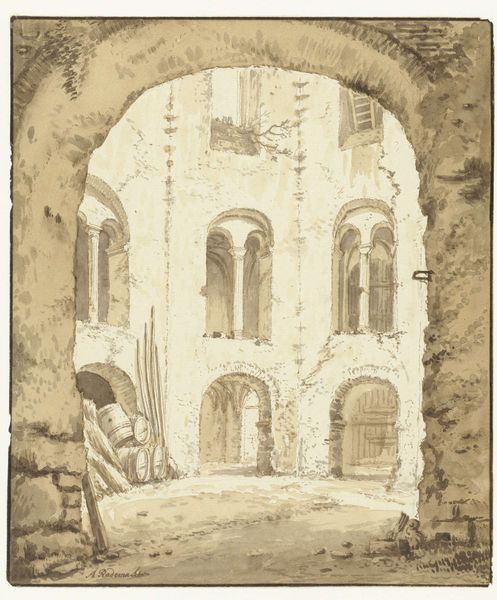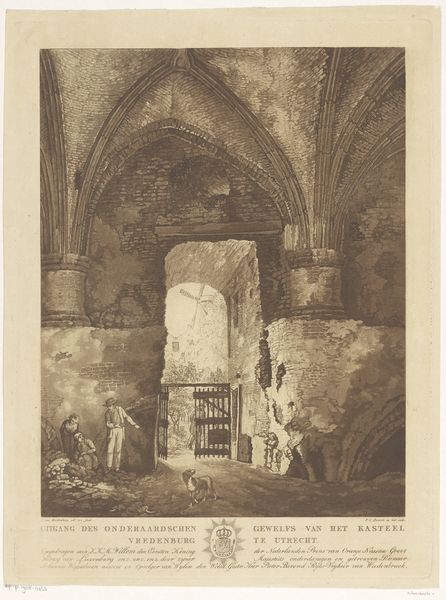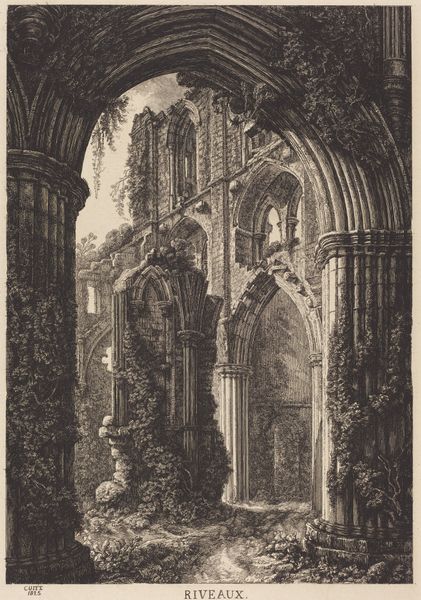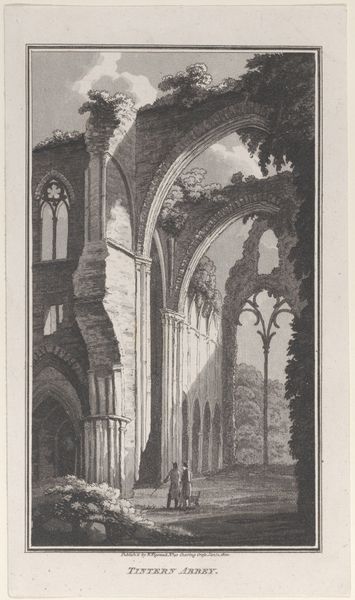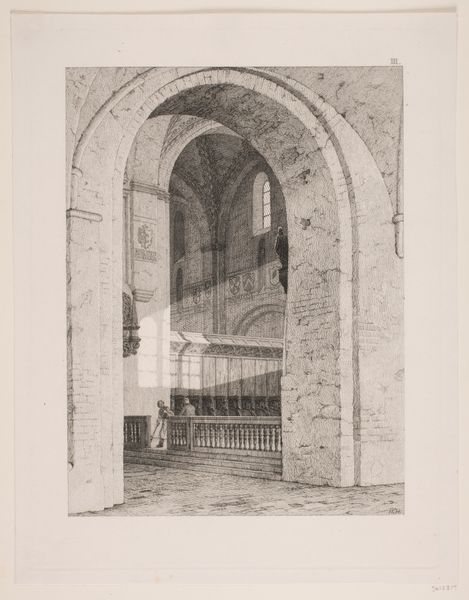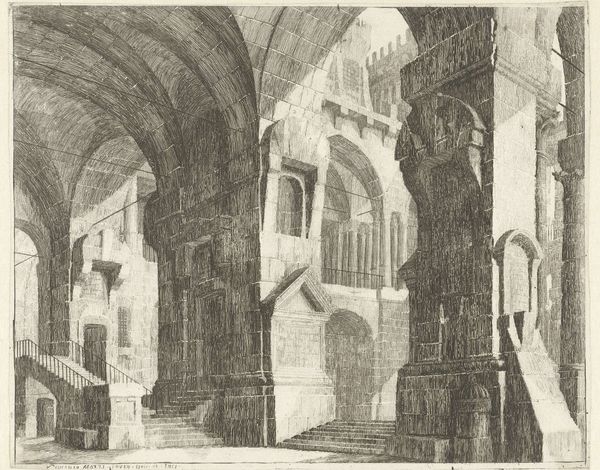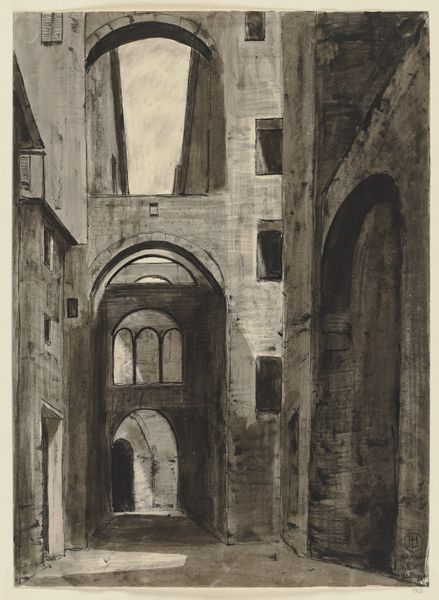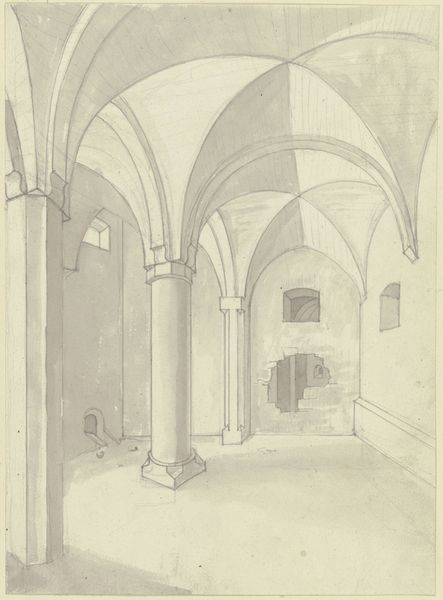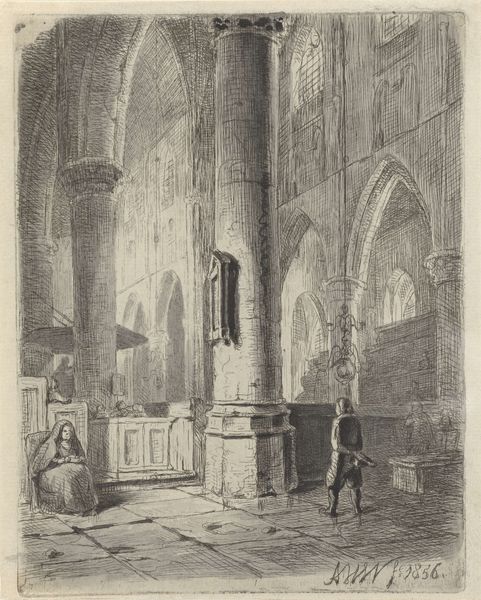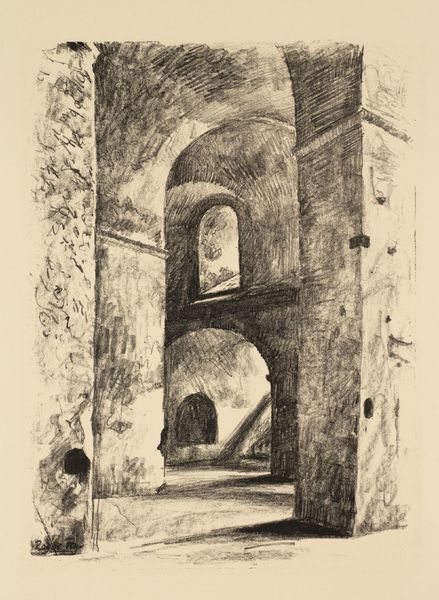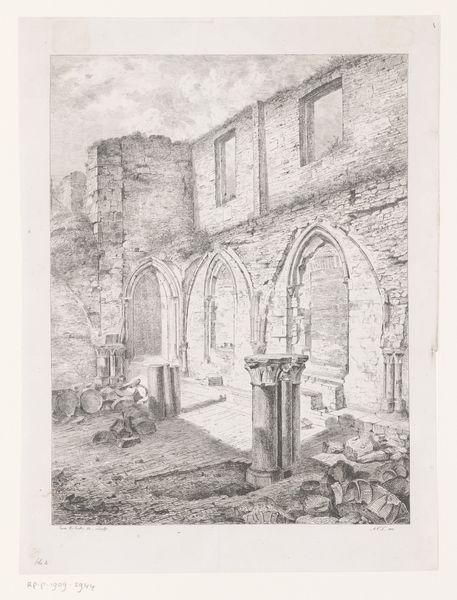
drawing, painting, watercolor, ink, architecture
#
drawing
#
16_19th-century
#
painting
#
landscape
#
charcoal drawing
#
watercolor
#
ink
#
intimism
#
cityscape
#
italian-renaissance
#
architecture
Copyright: Public Domain
Curator: Allow me to introduce Friedrich Wilhelm Ludwig’s "Der Kreuzgang von S. Francesco in Amalfi," created with ink, watercolor, and charcoal around 1851. Editor: My first impression is one of contemplative serenity. The sepia tones lend a sense of timelessness, as if glimpsing a memory. The architecture almost feels like a stage set. Curator: Yes, there is that quality of the 'stage' but the monastery and its architecture are fascinating cultural touchstones. These spaces were so often locations where hierarchies were enacted and upheld through carefully controlled rituals. Spaces like this reflect power dynamics embedded within the church. Editor: The repeated arch motif—we see it echoed in the foreground, middle ground, and again on the face of the building across the courtyard. In so many traditions, the archway represents transformation, the passage from one state to another. It visually encapsulates spiritual transition. What does the courtyard then represent as the core? Curator: Perhaps it symbolizes the internal self, surrounded by those architectural echoes that reflect transformation as the continuous social construction of identity, faith, and power. The monastery is not separate, not isolated; it is, rather, a stage upon which our collective societal narratives are played. Editor: The eye is immediately drawn upwards and into the shadowed regions beyond the courtyard to see craggy forms reminiscent of bones, a stark juxtaposition to the calculated arches beneath. Considering Amalfi’s tumultuous history of conquest and changing hands over the centuries, there's perhaps a hidden vulnerability embedded in what initially presents itself as strength and sanctuary. Curator: That's an astute point. This constant reshaping speaks to Amalfi as a site that mirrors broader historical upheavals. The drawing seems to be showing us not only a place of apparent peace but hinting at the social and political realities constantly at play beneath the surface. Editor: It certainly encourages a layered understanding of both physical space and historical context. Ludwig's handling of light and shadow, particularly the sepia tones, also subtly hints at mortality. What appeared a place of refuge might instead echo the temporality of the body. Curator: Indeed, I find the drawing offers such an opportunity to delve into the convergence of aesthetics, social narratives, and historical context. It truly expands our understanding of the past while challenging our perspectives in the present. Editor: I’ll walk away from this viewing experience contemplating my own metaphorical arches and thresholds... What passages will I choose to navigate today?
Comments
No comments
Be the first to comment and join the conversation on the ultimate creative platform.

